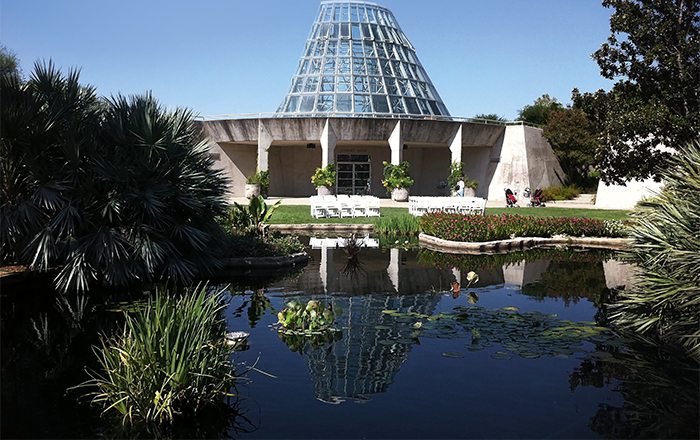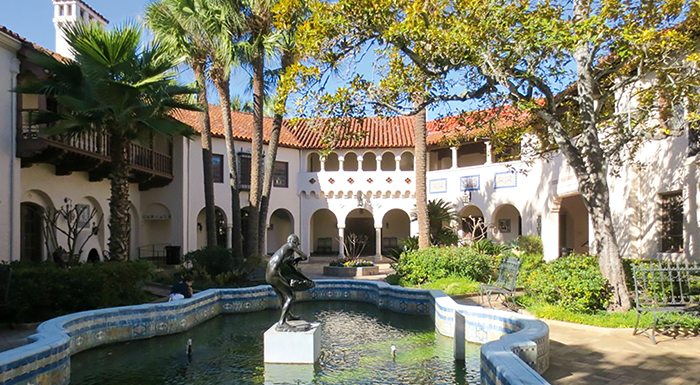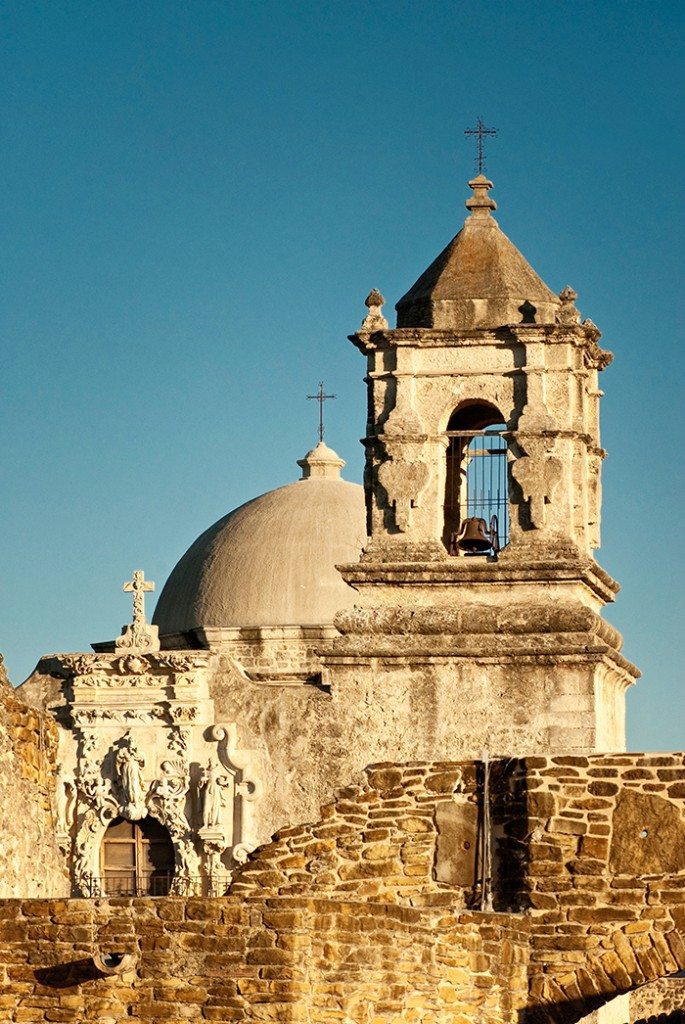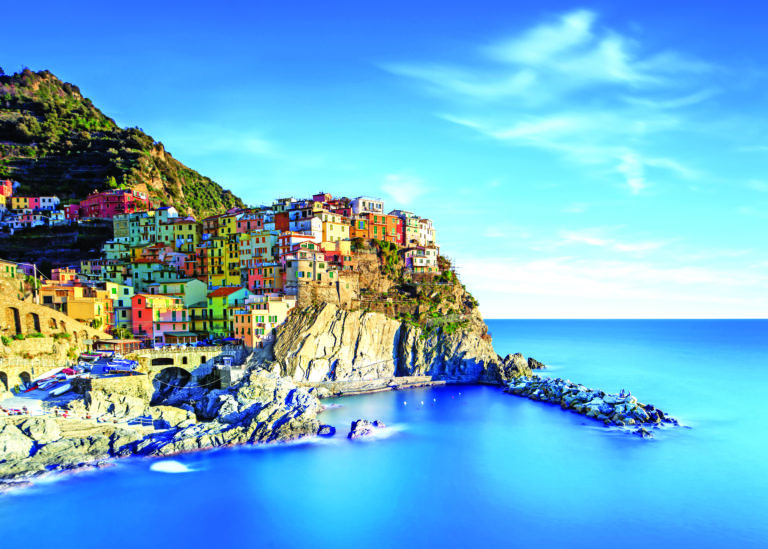Restaurant Gwendolyn is just one of San Antonio’s hidden gems and is the ideal vehicle to showcase this Texan city’s culinary talent. Located downtown along San Antonio’s River Walk, a five-kilometre network of walkways along the banks of the San Antonio River, Gwendolyn is underpinned by the values of “local, seasonal and handmade”.
Chef Michael Sohocki aims to create “honest food” made with pre-Industrial Revolution ingredients and techniques. This means no blenders, mixers, ice-cream machines, deep-fryers, or anything with a motor or plug. Ingredients are sourced locally and travel only a short distance to the restaurant.
“We must change ourselves to suit the season, not the other way around,” says Sohocki, who named the restaurant after his grandmother.
Sohocki’s devotion to serving handmade food made from local ingredients is inspiring.
“We buy whole animals, cut and dry-age them ourselves and preserve them in the old, tried-and-true ways,” he explains. “We smoke our own bacon, grind our own sausage, and all fats used here are either rendered ourselves, or have been naturally crushed from a seed.”
Sitting in his restaurant, watching the culinary magic that goes on in the very small kitchen space, it’s obvious Sohocki is a devotee of the Slow Food Movement. In keeping with this philosophy the menu is small, offering a three- or five-course menu with options that change daily.

Past & present
The second-most populous city in Texas, San Antonio owes much of its notoriety to the Alamo, a Spanish mission turned fortress, and its bloody 13-day siege of 1836; the Battle of the Alamo is now burned into the historic conscience of the Lone Star State.
In July 2015, the Alamo, along with San Antonio’s four Spanish missions, became the first Unesco World Heritage Site in Texas, the 23rd in the US.
The buildings themselves emulate the architecture, techniques and construction from Spain and Mexico, with domes, arches and long corridors both internally and externally.
While much of the architecture of downtown San Antonio is historical, the San Antonio Museum of Art, which houses Latin American, Asian and contemporary art, and the McNay Art Museum, Texas’ first museum of modern art, exemplify a wonderful coming together of both old and new architecture.
Meanwhile, the historic Main Plaza and River Walk feature illuminated bridges and buildings come nightfall.
Visitors will be wowed by a video art installation by French artist Xavier de Richemont, called San Antonio: The Saga. The 24-minute outdoor installation depicts the historical discovery, settlement and development of San Antonio, projected on to the facade of the historic San Fernando Cathedral in Main Plaza.
Urban REGENERATION
It seems the historical core of San Antonio is more lively – and authentic – than ever. New restaurants are popping up and immediately feel as though they belong in their historical surrounds, despite their modern conventions.
The Pearl Brewery complex is a newly renovated gathering place rich in history, with the brewery itself founded in 1881.
On its way to becoming a modern-day epicentre for San Antonio, the Pearl is also where locals share meals, work and live, with the complex boasting more than 300 apartments, 15 restaurants and cafes, businesses and a twice-weekly farmers’ market. The Culinary Institute of America is also based in this historic site and offers professional classes.
The Southerleigh Fine Food and Brewery sits inside the original brewery alongside the new luxury Hotel Emma, a beautiful 146-room hotel that blends historical elements with modern spaces.
The Southerleigh restaurant has various dining pockets, a large bar and open-plan kitchen and sits among exposed parts of the former Pearl brew house.
Chef Jeff Balfour’s food is delicious, with the buttery Fried Snapper Throats a crowd favourite, especially washed down with a local beer.
Nearby is La Gloria, serving authentic Mexican street food such as tacos, tortas and tlayudas (flatbread pizza). With super-friendly staff and Mexican-inspired décor, you can easily spend hours here eating and drinking.

Green spaces
The San Antonio Botanical Garden opened in 1980. The collection of gardens is dotted with architectural landmarks such as the Lucile Halsell Conservatory, whose subterranean greenhouses burrow seven metres deep in contrast to the conical glass exterior that reaches 20 metres into the sky. There’s also the Daniel J Sullivan Carriage House, an 1896 Romanesque pile moved brick by brick here in 1995 to form the garden’s portico, as well as several pioneer homesteads that showcase the way 19th-century settlers dealt with their challenging environment. While plant species originate from around the globe, the garden emphasises the natural diversity of Texas.
FOODIE HISTORY
While visiting San Antonio I learn about the “Chili Queens”, an early version of food trucks.
From the 1860s to the late 1930s, and in particular after the arrival of the railroad in 1887, food and entertainment was offered to visitors and locals alike by these women, who served chilli con carne, tamales and enchiladas in makeshift restaurants in the city’s plazas. Street performers and revellers created a carnival-like atmosphere.
According to many accounts, the lantern-lit tables of the chilli stands appeared at dusk and customers were served until dawn, with food cooked or reheated on portable stoves. In 1885, journalist Alexander Sweet wrote in his nationally circulated newspaper Texas Siftings, “The innocent stranger who takes a mouthful of chile con carne never inquires what the other ingredients are. His only thought is how to obtain the services of the fire department”.
According to an 1897 San Antonio Express report, newspapers and magazines came to idealise the “Chili Queens” as “stunning creatures, with the rich, brown skin of the tropics and the languorous grace and bewitching black eyes of Spanish donnas”.
The “Chili Queens” are but one chapter in San Antonio’s history. Today, visitors can experience first-hand not only this long and proud history, but the modern regeneration that’s happening across the city.
Many new stories – culinary and otherwise – are being told, with new and not-so-new flavours adding to the mix of the city.

WHERE TO STAY
Mokara Hotel & Spa is the place to stay in San Antonio. Centrally located alongside the river on Crockett Street (as in Davy), this luxury hotel combines historical architecture with interiors that could be from a Ralph Lauren catalogue. Within walking distance of the Alamo, restaurants, markets and great shopping, the hotel’s rooftop pool is sure to beckon after a long day on the city’s streets. 212 W Crockett St, +1 210 396 5800, mokarahotel.com.
MiNDFOOD flew with Air New Zealand. airnz.com.au







